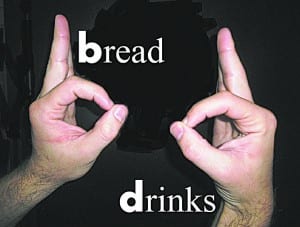 While at a formal dinner party over the holidays, a good friend approached me wondering if I had noticed something wrong with the table settings. I had not; I had only noticed that the tables were beautifully decorated with a Christmas motif. Yet her question still intrigued me, since we both knew our hostess is a perfectionist who would not stand for “something wrong with the table settings”.
While at a formal dinner party over the holidays, a good friend approached me wondering if I had noticed something wrong with the table settings. I had not; I had only noticed that the tables were beautifully decorated with a Christmas motif. Yet her question still intrigued me, since we both knew our hostess is a perfectionist who would not stand for “something wrong with the table settings”.
When I asked my friend to expand, she said “we know our hostess pays attention to every little detail, yet she has allowed servers to place the cutlery in the wrong places. Everyone knows that proper etiquette calls for the salad fork to be the first fork to the left, the farthest from the serving plate since it is going to be the first one used, yet in its place they have the fish fork. I also noticed the salad fork is next to the serving plate in the position that belongs to the dinner fork. Something is obviously wrong”.
Her concerns could have been appropriate if our hostess had been adhering to the strict American dining style of a few years back, but today, so many of the rules have changed that even some of the “white glove etiquette school teachers” no longer know what is going on. As we progress to a more relaxed dining atmosphere with the American and European dining styles continuing to merge, more changes to the dining rules of etiquette can be expected as they have over so many years.
Although the Egyptians had rules for behavior over 5,000 years ago, the term etiquette was first used by the French in the 17th century when small signs and labels called “Etiquettes” were placed around the palaces and gardens telling guests what to do. Etiquette is now defined as “the customs or rules governing behavior regarded as correct or acceptable in social or official life”.
The most interesting juxtaposition is that while most people are intimidated by the concept of etiquette, its purpose is to make us feel comfortable. It levels the playing field by letting everyone know the expected behavior. When you know how to behave “appropriately” by adhering to certain socially accepted rules, your level of confidence should increase exponentially. Few things in life could be simpler.
Occasionally, we get confused and disoriented with the execution of the details, such as when we get to the table and forget something as simple as which is our bread plate and drinking glasses. Luckily, there is an easy way for us to recall and answer this frustrating question. If we hold our hands in front of us with the palms facing each other and make a circle or OK sign with our thumbs and forefingers while the remaining 3 fingers in each hand point upwards, we make a “b” and a “d” in the left and right hands respectively. This means that your bread plate is the one to your left and your drinking glasses are to the right no matter how close or far the servers placed them.
Another issue many find confusing and the reason for our conversation on that grand night, was how the table should be set. A lot has changed over the years; yesterday’s rules are not totally applicable today. Formal dinners are not as they used to be, cuisines, flavors and textures have evolved. There are no set patterns as to how dishes should be served other than they should progressively complement each other. The norm is to go from lighter to heavier and the placement of the cutlery from the outside in should reflect it.
These are not necessarily bad changes and our rules of etiquette should reflect them as our hostess demonstrated with one of the best and most elaborate meals we had during the holiday season.






